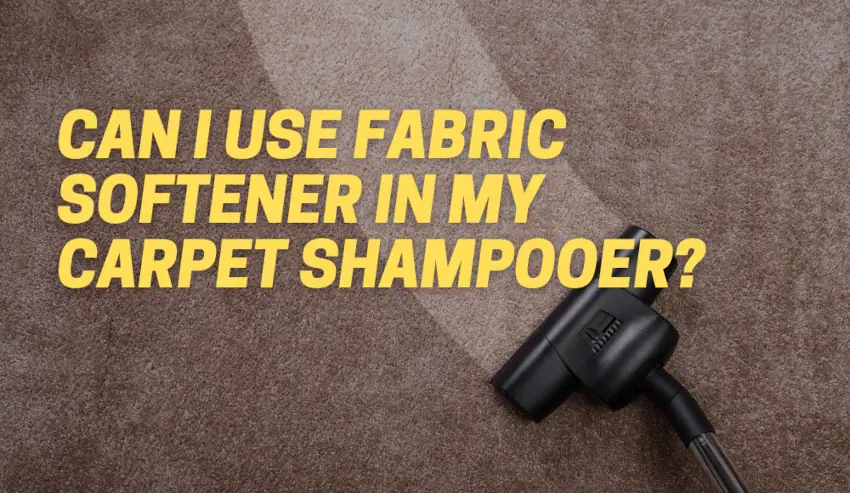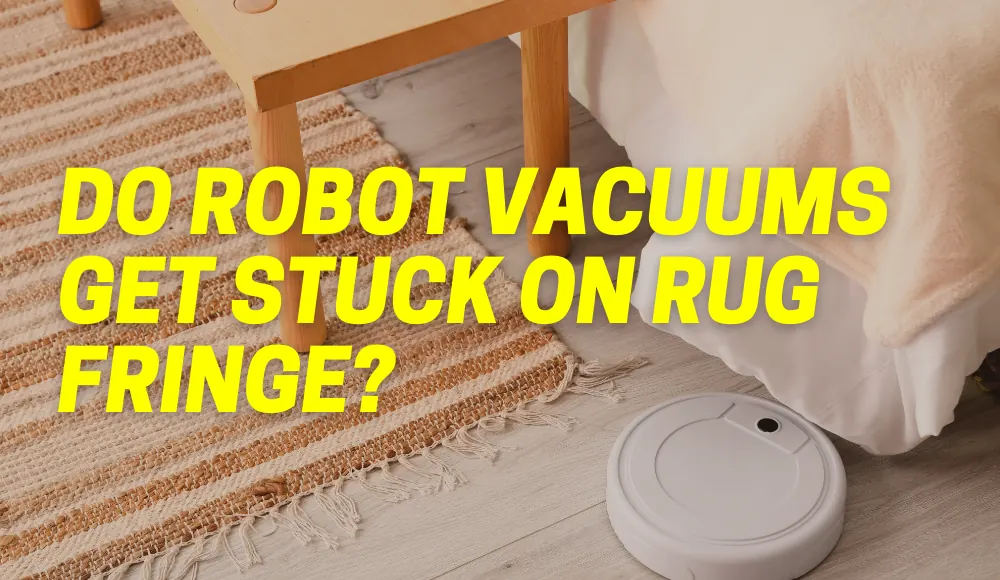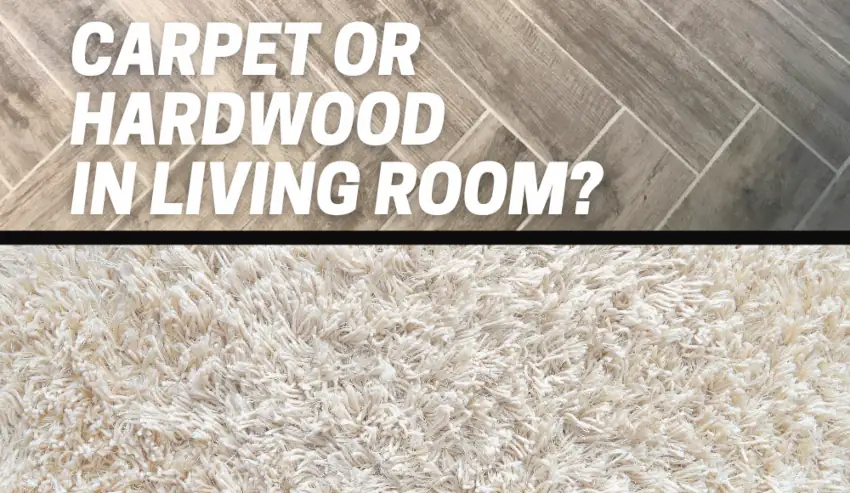Last updated on November 2nd, 2023 at 12:47 am
If you’re a proud owner of a carpet shampooer, you know the satisfaction of having clean, fresh carpets under your feet. But have you ever wondered if you can take your carpet cleaning game to the next level by using fabric softener in your carpet shampooer?
In this blog post, we’ll explore the ins and outs of using fabric softener on carpets, how it affects the cleaning process, and some user advice for those eager to try this alternative cleaning approach.
How to Fix Crunchy Carpet After Cleaning?
So, you’ve diligently cleaned your carpets using a carpet shampooer, but now they feel a bit crunchy underfoot.
Don’t worry; this is a common issue that many people face.
The crunchy sensation is usually caused by leftover soap residue that wasn’t rinsed out properly during the cleaning process.
Here’s how to fix it:
- Rinse Thoroughly: After using your carpet shampooer with the appropriate cleaning solution, make sure to rinse the carpets thoroughly with plain water. This will help wash away any remaining soap residue.
- Use a Neutralizer: You can create a DIY neutralizer by mixing one part white vinegar with three parts water. Spritz this mixture lightly over the carpet and let it dry. The vinegar will help break down any leftover soap, leaving your carpets soft and residue-free.
- Proper Drying: Ensure your carpets are adequately dried after cleaning. Excess moisture can also contribute to the crunchy feeling. Use fans or open windows to facilitate faster drying.
Does Fabric Softener Attract Dirt to Carpets?
One common concern about using fabric softener on carpets is whether it attracts dirt and makes them dirty faster.
Fabric softeners are formulated to make clothes feel soft and reduce static cling, but their chemical composition might not be suitable for carpets.
The truth is: Fabric softeners contain additives that can leave a residue on the carpet fibers. This residue can indeed attract dirt and other particles, making your carpets look dingy and worn out.
Can I Use Fabric Softener on Carpets?
Technically, you can use fabric softener on carpets, but it’s not recommended for regular carpet cleaning.
As mentioned earlier, fabric softeners leave a residue that can lead to more frequent cleanings, defeating the purpose of deep cleaning your carpets in the first place.
Instead, opt for specialized carpet cleaning solutions designed for use in carpet shampooers. These solutions are formulated to clean effectively without leaving any unwanted residue behind.
Can I Add Fabric Softener to My Carpet Cleaning Solution?
It may be tempting to experiment by adding fabric softener to your carpet cleaning solution to achieve that soft, fresh laundry scent.
However, it is advised against doing so. As we’ve discussed, fabric softeners can leave a residue on carpets, and combining them with your cleaning solution can lead to the same undesirable effects.
Stick to using carpet cleaning solutions recommended by the manufacturer of your carpet shampooer. They are tested and approved for use with the equipment, ensuring optimal cleaning results without any negative side effects.
Can I Use Fabric Softener In My Carpet Shampooer: User Advice
While using fabric softener in your carpet shampooer is not the best idea, some users on the Internet have found creative ways to incorporate a pleasant fragrance into their carpet cleaning routine.
Here are some tips they recommend:
| Main Points |
|---|
| Fabric softener is not recommended for use in a carpet extractor as it may leave a sticky residue and attract dirt, making carpets dirty. |
| Using fabric softener on stain-resistant carpets can void warranties and cause rapid resoiling; suggests using white vinegar as a rinse. |
| Advises against using fabric softener in a carpet shampooer; recommends using an alkaline cleaner with a cap of acid in clean water. |
| Fabric softener can be used in steam or hot water carpet cleaning machines but may leave a residue. Suggests fabric softener repels dirt. |
| Advises using rug cleaner for carpets; mentions that fabric softener is waxy and oily. |
| Warns against using fabric softener as it’s flammable and increases flammability; advises against using it on kids’ clothes. |
| Strongly discourages using fabric softener and recommends using carpet and rug institute approved solutions. |
| Agrees with previous points and mentions that fabric softener’s oil can attract soil to carpets. |
- Essential Oils: Add a few drops of your favorite essential oil to the water reservoir of your carpet shampooer. The gentle scent will disperse as you clean, leaving your carpets smelling delightful without any sticky residue.
- Baking Soda: Before running your carpet shampooer, sprinkle some baking soda on the carpet surface. Let it sit for a few minutes, then proceed with your regular cleaning routine. Baking soda is excellent at neutralizing odors and can freshen up your carpets.
- Scented Carpet Powder: Some companies offer scented carpet powders specifically designed for use with carpet shampooers. These powders add a pleasant fragrance to your carpets without any adverse effects.
What Can I Put in My Carpet Cleaner to Make It Smell Good?
If you’re looking to make your carpet cleaner smell good without the use of fabric softener, there are several safe and effective alternatives:
- Lemon Juice: Mix equal parts of water and lemon juice to create a natural, refreshing scent for your carpets.
- Herbs: Steep dried herbs like lavender or rosemary in water and use the infused water as your cleaning solution.
- Cinnamon: Create a cinnamon-infused solution by boiling cinnamon sticks in water and using it in your carpet cleaner.
- Citrus Peels: Soak citrus peels in water for a few days to create a citrusy-smelling cleaning solution.
- Commercial Carpet Cleaners: Look for carpet cleaning solutions that contain natural fragrances and are free from harmful chemicals.
How to Make a Carpet Smell Good
—
Expert Tips for Effective Carpet Cleaning
- Regular Vacuuming: Before using your carpet shampooer, make sure to vacuum your carpets thoroughly to remove loose dirt, debris, and pet hair. This will ensure that your carpet shampooer can focus on deep cleaning the fibers.
- Pre-treat Stains: For stubborn stains on your carpets, it’s a good idea to pre-treat them before using the carpet shampooer. You can find commercial stain removers or create your own DIY solution using ingredients like white vinegar, dish soap, and warm water.
- Move Furniture: Before cleaning, move any furniture or obstacles from the carpeted area. This will allow you to clean every inch of your carpets evenly and prevent any potential damage to the furniture.
- Test in an Inconspicuous Area: If you’re using a new carpet cleaning solution or DIY mixture, always test it in an inconspicuous area of the carpet to ensure it doesn’t cause any discoloration or damage.
- Follow the Manufacturer’s Guidelines: Different carpet shampooer models may have specific usage instructions and recommendations. Always follow the manufacturer’s guidelines for the best results and to maintain your warranty.
- Work in Sections: Divide the carpeted area into smaller sections and clean one section at a time. This approach ensures that you give proper attention to each area and achieve a more thorough clean.
- Don’t Over-wet the Carpet: Avoid saturating your carpets with water or cleaning solution. Excess moisture can lead to mold and mildew growth, and it may also damage the carpet backing.
- Consider Professional Cleaning: While carpet shampooers are effective for regular maintenance, consider getting your carpets professionally cleaned once or twice a year to tackle deep-seated dirt and allergens.
- Keep Pets and Foot Traffic Away: After cleaning your carpets, keep pets and heavy foot traffic away until the carpets are completely dry. This prevents new dirt from being tracked onto the damp carpets.
- Regular Maintenance: To prolong the life of your carpet shampooer and ensure consistent cleaning performance, perform regular maintenance tasks as recommended by the manufacturer, such as cleaning filters and checking hoses for clogs.
Useful Information: Carpet Cleaning Solution Ingredients Comparison
To help you choose the best carpet cleaning solution for your carpet shampooer, we’ve compiled a comparison of common ingredients found in commercial cleaners:
- Enzyme Cleaners: These cleaners contain enzymes that break down organic stains like pet urine, food spills, and more. They are excellent for tackling tough stains and odors.
- Oxygen Cleaners: Oxygen-based cleaners use hydrogen peroxide to lift stains and brighten carpets. They are effective on a variety of stains and are considered environmentally friendly.
- Citrus Cleaners: Citrus-based cleaners use the natural power of citrus extracts to dissolve greasy stains and leave a fresh, pleasant scent.
- Plant-based Cleaners: These cleaners are made from natural, plant-derived ingredients and are often free from harsh chemicals. They are a great choice for environmentally-conscious users.
- Chemical Cleaners: Traditional chemical cleaners often contain synthetic ingredients and might be more aggressive on stains. If using chemical cleaners, ensure proper ventilation during and after cleaning.
- Neutral pH Cleaners: Neutral pH cleaners are gentle on carpets and won’t leave any residue. They are suitable for regular maintenance and safe for use on most carpet types.
- Pet-Friendly Cleaners: If you have pets, look for carpet cleaning solutions labeled as pet-friendly, as they are designed to remove pet stains and odors effectively.
Always check the label and read reviews before purchasing any carpet cleaning solution. Consider the specific needs of your carpets, the presence of pets or allergies, and choose a solution that aligns with your preferences and values.
FAQs
Can I use a carpet shampooer on hardwood floors or tiles?
While you can use a carpet shampooer on tile floors, it’s essential to ensure that the shampooer you purchase is specifically designed for this purpose or has an attachment suitable for tile floors. Standard carpet shampooers often contain metal parts that can scratch and damage your tile flooring. So, to protect your tiles from potential harm, opt for a shampooer explicitly made for cleaning tile floors or one that comes with appropriate attachments.
How often should I clean my carpets with a carpet shampooer?
The frequency of carpet cleaning depends on various factors such as foot traffic, the presence of pets, and household habits. Generally, it’s recommended to clean high-traffic areas every 3-6 months and other areas at least once a year.
Are carpet shampooers suitable for removing pet hair?
While carpet shampooers can help with general pet messes and odors, they may not be the most effective for removing pet hair. Consider vacuuming first to remove loose hair before using the carpet shampooer.
Can I use homemade cleaning solutions in my carpet shampooer?
Yes, you can use homemade solutions in your carpet shampooer, but be cautious and do a patch test first to ensure it doesn’t damage your carpets or the machine. Always follow the manufacturer’s recommendations.
How long does it take for carpets to dry after shampooing?
Drying time varies depending on the humidity, carpet thickness, and airflow in the room. On average, carpets can take anywhere from 6 to 12 hours to dry completely.
Conclusion
In conclusion, while using fabric softener in your carpet shampooer might seem like a good idea for adding a pleasant fragrance, it’s best to avoid it due to the potential residue and dirt-attracting effects. Instead, opt for approved carpet cleaning solutions that are designed to leave your carpets clean, fresh, and residue-free.
Remember, maintaining your carpet shampooer and using the right cleaning solutions will ensure your carpets stay in top-notch condition for years to come. Happy carpet cleaning!



